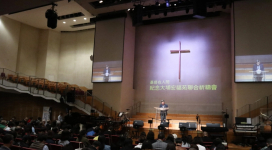In a small village in the Diqing Tibetan Autonomous Prefecture in Southwest China's Yunnan province, Catholicism is flourishing among the mainly Tibetan populated area.
Since foreign missionaries came to spread the Gospel, Catholicism has grown in the small village of Cizhong, located by the Lancang River and Hengduan Mountains, China Daily reported recently.
On the west side of the village, where the Catholic Cizhong Church built in the early 1900s resides, 89 households out of the 130 are Catholic, the newspaper reported, adding that Catholic families have long since discarded traditional Tibetan names for Catholic ones after missionaries converted them some hundred years ago.
Xiao Jieyi, 76, whose father came to Cizhong with foreign missionaries as a translator met Xiao's mother who was Tibetan, married her and lived in the church for 25 years.
According to China Daily, Xiao followed his father's direction in the 1990s after he saw that many young members of the church were unable to read the Tibetan scriptures. He worked to translate the characters into Chinese and finished the book with the help of other church members in 2002.
Since the 16th century missionaries have attempted to introduce Christianity to the Tibetans, however, they were unsuccessful to record any Christian communities in China until the 1920s, the newspaper reported. At that time, some French-speaking missionaries were able to convert some Tibetans hamlets in Cizhong, which became the only recorded Tibetan Catholic church in China.
"These Tibetan Catholics, living near Cizhong areas, have kept their faith till today and have spread their faith to many in surrounding villages," Rev. Dr. Chan Kim-kwong, executive secretary of Hong Kong Christian Council said in an article on Tibetan churches.
In the village, Tibetan-Buddhists and Catholics live side by side, sharing the marketplace and helping each other prepare for religious festivals.
On Christian holidays, such as Christmas, "the Buddhists help us prepare the celebration, and they sing, dance and eat with us," Hansen, a 28 year old who works in Shangri-la, the capital of Diqing told China Daily. "The only difference is that they don't go to church to pray. It's similar for us on Buddhist festivals."
The most recent holiday that they were able to celebrate together was Christmas.
On Christmas Eve, a fire was lit before the church, as villagers from different religions, ages, and genders came together to celebrate, China Daily reported. At midnight, the people who were singing and dancing swarmed into the church for Mass, while others stayed behind.
"On this auspicious day, we meet at the Catholic Church. It is by God's mercy that we can celebrate Christmas together," Hansen said.
The Cizhong Church built in 1914 is one of the few churches in the region that survived the cultural revolution. Despite its remote area, the missionaries managed to penetrate through the mountain ranges to spread the Gospel. However, conflicts arose between the Buddhist lamas and the priests, and as the cultural revolution started to spread, the missionaries had to leave the area.
Meanwhile, in recent years the churches started to flourish as they reexamined the roots that were planted by the missionaries.







